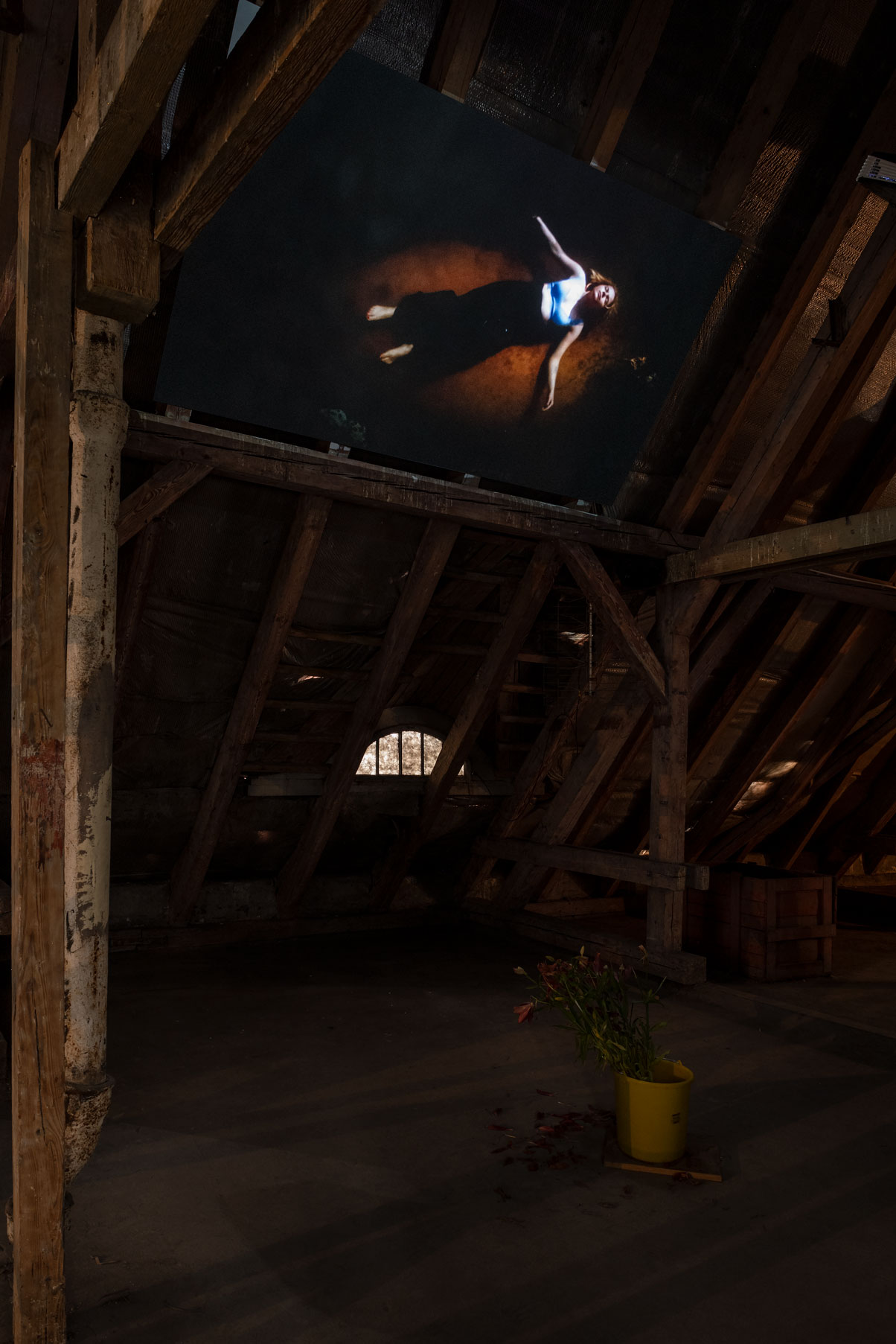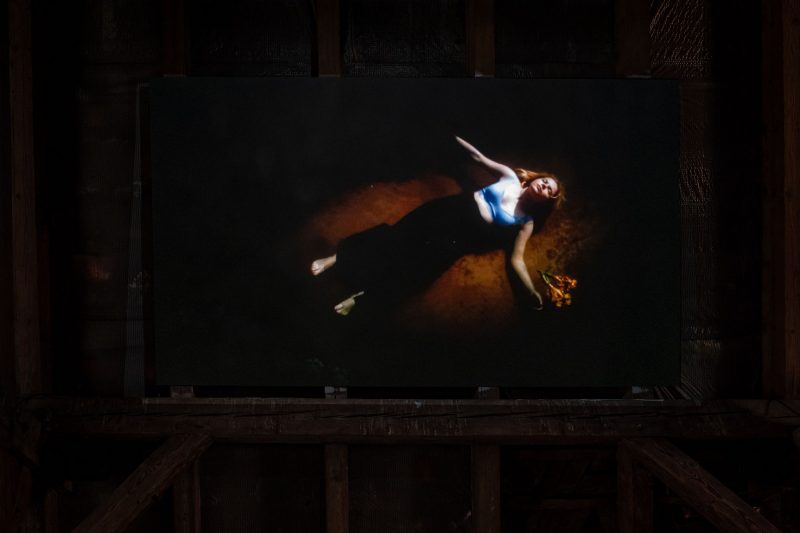Ophelia

- 2’18”
- 2021
Agata Lankamer’s video is an audiovisual tale of a little girl – Ophelia. On 15 July 1999, a bat entered her body. As a result, her flower never bloomed, she stopped growing and aging. The time stopped. Petrified, she has been waiting for the poisonous nectar to flow out. Her vegetation is slow motion and memory training. She is trying to reconcile her innocence with a flaw, to purge herself of disgust. She wants to finally perform a rite of passage, heal herself and break free from the stagnation of her own physicality.
“Ophelia” is an attempt to rework the artist’s experiences connected with paedophilia and to analyse the relationship between memory and trauma. The liquidity of the boundary between fiction (imagination, childhood fantasy) and reality (memory) makes it impossible to move on (and therefore to undertake real therapy). This state is symbolised by Shakespeare’s Ophelia, shown as in Millais’s painting: frozen in the dramatic moment of drowning, resigned and simultaneously expectant. Ophelia also stands for the insanity or Victorian hysteria, i.e. an imaginary disease invented to curb women’s sexual and moral freedom. Asexuality, which is the result of untreated trauma, is equally excluding. The childish looks of the protagonist, an adult woman, are all the more ironic here.
Through a reference to many similar tropes in cultures of the world, Lankamer views the bat as a synonym of a predator. It is said that in Mexico, the devil was depicted as a manbat with an erect penis. The fears of the morally (and sexually) oppressive Victorian era gave rise to the unnatural, shapeshifting figure of a batvampire. In Lankamer’s portrait, Ophelia is holding a sweetsmelling yet poisonous flower, pollinated by bats. The association with sexual penetration is selfevident. The flower and the bat remain in ceaseless poisonous tension, reminiscent of a narcotic trance. Mutually conditioning each other, they remain hung in time.
